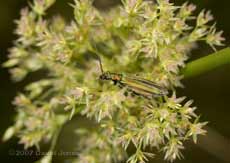Go to the last entry on this page .....Go to previous entry12 June - After a grey day yesterday with a disappointing high temperature of less than 20C, today also started grey, but afternoon sunshine pushed the temperature up to just over 23C. There were a few spots of rain in the early evening, but threatening clouds dissipated before it came to anything. I can't believe that it's a week since my hospital visit. Most of the 'twinges' have gone and its already getting harder and harder to remember that I must not do much of what I want to do for weeks yet! The big problem at the moment is staying awake through the day, which is why I missed yesterday's entry, so a little bit of catching up to do tonight. First of all, the newly hatched bugs - today there are only five on the birch leaf, and a search of all leaves and branches for a couple of feet around revealed no others. The white case has also disappeared. The sawfly larva photographed for my previous entry is still around, but a second one that I found nearby has disappeared. There have been no adverse weather conditions to dislodge the larvae, so I have to wonder if the larvae have been picked off by one of the numerous Great and Blue Tits that are feeding here at the moment. The hairy caterpillar is still about, although it has now moved to another leaf. It had only nibbled at a bit of the first leaf, so I wonder what prompted it to move?
Talking of caterpillars, this one was well and truly exposed on a nettle leaf during the early evening, with no hairs to put off a potential predator. Tim Norriss tells me that this is the caterpillar of the Spectacle Moth.
A couple of new flowerings to report on, both over the last couple of days. First is the White Campion, first seen on the 10th, and which is becoming a regular in front of the workshop shed, although as usual it seems to be just one plant.
The second plant is a Bird's Foot Trefoil (Lotus corniculatus), one of the plants I bought and planted back in early May. This is in the narrow strip of soil between the path and the caravan shelter.
Another of those plants, the Purple Loosestrife (Lythrum salicaria) is included here, not because it is in flower yet (although it is thriving in its position next to the big pond) but because this morning I noticed neat chunks taken out of its leaves.
As I watched, the culprit returned to take another piece - the first leaf-cutter bee seen in the garden this year. It's not one of ours, their bamboo tubes show no signs of life as yet. I fetched my camera from the house and waited for a while but it didn't return. Perhaps I'll check again tomorrow.
I was eventually distracted from watching the Loosestrife by a constant, loud buzzing from nearby. Pinpointing the source of the noise led me to this mating pair of Narcissus-flies (Merodon equestris). Right through the process the male produced the buzzing so that his wings either appeared blurred or seemed to disappear completely as they vibrated at high speed. It seems strange to broadcast your presence at a moment like this!
With the emergence of the Cinnabar moths imminent, there will be very little for them to lay their eggs on (egg were laid on the 16th last year).
At the far end of the big pond I always allow a patch of what I think is couch grass(?) to grow fully in the hope of attracting insects. Today it is doing its job, attracting this Notospira elongata, a very sleek mirid bug of rough grassland.
Also seen today but not photographed, was a black longhorn beetle with bright yellow bands on the wing covers - not a species that I've seen here before. Although it looked similar to a Wasp Beetle I didn't get a good enough look to be sure. While we were having coffee on the veranda this morning, Sheila and I were honoured by the Robins. The male came for mealworms, and his partner appeared. While she is usually a rather nervous bird, hiding in the Hawthorn, this time she perched on the rim of the bird bath to be the recipient of courtship feeding by her partner. They must be preparing to nest again (or have already started). We haven't seen the young robin recently. Last week I saw it being chased out of the garden by the adults and haven't seen it since. The House Sparrows must have chicks at the moment as they were eager to take mealworms away to the boxes. The Starlings seem to be hunting elsewhere for food for their offspring.
13 June - The temperature almost made it to 24C this afternoon, although by the end of the afternoon sunshine disappeared , and this evening there is just enough rain falling to make the garden damp, but not enough (so far) to make a difference to water levels in the water butts or ponds. The mid-day sunshine really encouraged the solitary bees to get going around the bee hotels, especially the small bee, Heriades truncorum (a nationally scarce species), several dozen of which swarmed around the main hotel block.
The female (with a black face) in the hole was the subject of a great deal of attention from the male with the light hairs on its face. The male stayed still, and every so often the female would appear at the entrance and touch antennae with the male, and as this picture shows, they seemed to actually touch heads together - a bee kiss?! Eventually, she emerged completely and flew off into the swarm, pursued by the male. I was distracted from the bees when I saw this solitary wasp coming back and forth to the hotel. It seemed to be visiting sealed holes so I took a closer look and discovered to my surprise that it was actually stealing (or should that be recycling?) mud that had been used to seal holes last year. while I watched to took away six mud pellets to a nest being made elsewhere. The wetness of the mud ball indicates that the wasp must either have had lots of saliva or had drunk some water before collecting the mud.
Around lunchtime I spent some time watching a female G. jaculator checking out the holes in the bee hotel.
Only once did I see her decide to lay an egg. Then she positioned the rear end of her abdomen next to the hole, 'unwrapped' her ovipositor and then reversed into the hole, with the sheath for the ovipositor folded back along her body. I noted the position of the hole so that I can watch out for an emergence next year.
They consist of cut lengths (about 14cm) of various plant stems, including buddleia, reedmace, Great Willowherb, and whatever else that had a soft core. The stems are all stuffed into a section from a plastic drinks bottle. There is some string on the left of the picture, used to hang the arrangement high up under the caravan shelter roof during the winter. I mentioned the stem bundles because this afternoon they provided the backdrop for a fascinating few minutes when I suddenly spotted not one but three examples of G. jaculator, including one that appeared to be just emerging.
The right hand insect is a bit of a puzzle, with its ovipositor completely exposed. Perhaps it has just emerged and is still going through the process of hardening its exoskeleton,
Anyway, it really did confuse me when it started to reverse as though it was going to insert the ovipositor into the hole still occupied by the other individual - it didn't actually do it. Notice the white tip to its ovipositor sheath,
which is missing on the third insect, seen here visiting the same, emerging individual. It looks as though this insect had suffered an injury which has greatly shortened the ovipositor and sheath, and may mean that it will not be able to lay eggs.
Finally, a picture of one of the insects as it completed the task of wrapping its ovipositor into its sheath, using its hind legs to 'velcro' together the two halves of the sheath
I hope to get a photograph of a male at some point. So far I've found just one photograph on the web, of a dead specimen which appears to be like the female but without the ovipositor. This was the nearest I got this afternoon, as this smaller, solitary wasp turned up to inspect the stems.
Not photographed, but greatly enjoyed were two appearances by a Ruby-tailed Wasp (Chrysis ignita) which looked absolutely brilliant in the sunshine.
Back to insect larvae - first on the Birch tree. Sometimes I find that leaves have had narrow slits cut into them, but usually I don't get to see what caused them. Today I was lucky enough to spot this sawfly (I think) larva making a start on producing one of these slots. It's already moulted, and the discarded skin is at the bottom end of the slot.
Creating holes like this in the leaf means that the larva is exposed to predators form both above and below, so this species has developed an strategy to protect itself. If it detects danger from either direction it simply swings its body to hide on the opposite side of the leaf.
On a Fuchsia at the front of the house, this tiny larva has adopted a different strategy. It simple eats away areas from the underside of the leaf, but leaves the top surface intact. Also it seems to be leaving some leaf tissue - perhaps this help to maintain a 'normal' looking leaf when viewed from above.
Finally, two days ago I was 'bitten' by one of the small plant bugs. Actually, they don't bite, but stab you with their piercing mouth parts (rostrum), using it like a hypodermic needle, and the spot where it struck is still itching today.
That rostrum is usually used to suck juices form other small animals or from plants. However, this bug, on a bamboo plant, was using its rostrum as a drinking straw to suck up the honeydew that is being produced in large quantities at the moment by a thriving aphid community.
We really need the ladybirds to reappear in force again. They are about in small numbers, but nothing like the first emergence back in April. I'm seeing mainly 2-spots, with a few 10-spots and a single Cream-spot this afternoon. I'm not sure about this one, although it does have the dark legs of a 2-spot. The pale colouring could mean that it has only recently emerged, and the pattern seems to be that of a band and loop variant of the 2-Spot Ladybird.
15 June - A bright day, with showers - one quite heavy one in the early afternoon. I needed to take a bit of a break yesterday, so no diary entry for the 14th, but I did use my camera briefly to take a couple more photographs of the solitary wasp species I saw taking mud on the 13th. This time the wasp seemed more interested in using one of the 3.5mm holes in a recently added annex to the bee hotel. It is most likely Symmorphus bifaciatus, a regular here over the last three years at least. They hunt for the larvae of leaf beetles to put in the burrow as food for their larvae. The larger, sealed holes are 7mm across and were used by Osmia species bees.
Perhaps that nymph hatched later than all the others. The five survivors of the previous hatching are still on the same leaf and there has been no obvious change in their appearance so far. The little sawfly(?) larva that I photographed on the Birch on the 13th has vanished. It was there yesterday morning, starting on a second slot in the leaf, but it had gone by the end of the afternoon. It seems that its survival strategy of hiding on one side of the leaf may have been flawed after all! The hairy caterpillar is still about. I may take another photograph of that later on to see how much it has grown. Over the next weeks (especially of the House Martins do not nest here) you are likely to see quite a few pictures taken around the bee hotels. As I've already said, the nationally scarce Heriades truncorum is very busy here now and I hope to record some of its behaviour through photographs. Also, I'm watching out for another bee, Stelis breviuscula, which is a cuckoo bee that lays its eggs in H. truncorum nests. S.breviuscula is a rare species here in the UK so it would be useful to obtain some decent pictures of it - at the moment it's a matter of looking very closely and hoping to 'spot the difference'!
Anyway, this is a female H. truncorum that had only recently emerged, and was still drying itself out. Down the side of the abdomen you can see the hairs used for carrying pollen. S.breviuscula looks very similar, but may be marginally shorter, and does not have any pollen carrying hairs - not needed as its offspring will be provided for by the H. truncorum host. (thanks to Stuart Roberts of the Bees, Wasps and Ants Recording Society for his help with this info and Other IDs).
In this second shot I was a bit lucky. The bee was exercising its wings and the flash caught the moment when they were fully extended with the left fore-wing in focus.
Just after this picture was taken, she climbed up to the top of the piece of timber and was immediately found by a male. She was obviously not ready for mating, and after waving her hind leg at him a few times, she turned around and headed into the hole you can see to the left of the picture, forcing the male to release her.
It is one of the Chrysis ingnita group of seven species whose larvae are ectoparasites in the nests of mason wasps.
A couple of weeks ago there was a lot of publicity around a diamond encrusted skull by Damien Hurst for which he is asking some £50 million - I'm afraid that compared with that work, this wasp would have to be regarded as priceless! I must have walked past this moth a couple of dozen times today as it rests under the canopy on our veranda. It looks like a Riband Wave (Idaea aversata). There are two forms of this moth, this one (form remutata) and the more typical version which has a dark band across the wings between the two central cross-lines. I caught sight of a just single dark coloured butterfly passing over the garden during a sunny spell this morning.
This evening I made an unfortunate discovery on a birch leaf, in the form of what I'm certain is a Harlequin Ladybird pupa. You can see the light coloured spines in the discarded moult to the left of each image. This is a real disappointment. It is on a leaf just above where I found a Harlequin larva on a Wood Avens plant back on the 3rd June - there is a good chance that they are from the same brood. The leaf is now enclosed in a plastic bag until the adult emerges.
Last night I saw an Orange Ladybird on the tree for the first time in several weeks. At the same time I also saw a well developed Oak Bush Cricket nymph (Meconema thalassinium) but it was too high in the tree to photograph. This evening, just after I photographed the Harlequin pupa I found this less developed cricket on an adjacent branch.
And finally, another moth, this time a White Plume Moth (Pterophorus pentadactylia), photographed on our kitchen window as I was just about to pack up for the night.
16 June - A mainly bright day, with a couple of showers this morning, but a pleasant afternoon, most of which I slept through - one of those tired days!
Just one bit of garden news today. The first sighting of a Grey Squirrel in the garden since October 2005 - here for breakfast at around 8.30am. I tried to capture the leaps it made to and from the caravan shelter, but I'm afraid my powers of anticipation and reflexes weren't up to it today!
17 June - The day was largely bright and sunny, but my continued weariness meant very little done today.
This is the first time I've seen this species in the garden, and I can't help but wonder if its larva came here as a passenger in the timber, which was seasoned in managed deciduous woodland.
The only other thing photographed today was this Oedemera nobilis. I have already included a photograph of this species taken on 1 June, but I'm including this one because its the first time I've seen an insect feeding on the flowers of the Soft Rush (Juncus effusus) that grows by the side of the big pond. I must take close-up pictures of these flowers at some time over the next couple of days. I didn't pay much attention to the bee hotels today, but both Chrysis ingnita and Gasteruption jaculator were there around lunchtime. Today's large images will be added tomorrow morning Click on images to see larger versions |
|
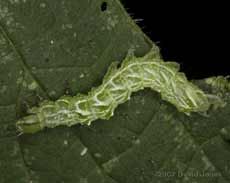
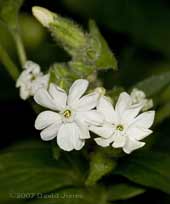
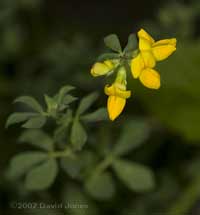

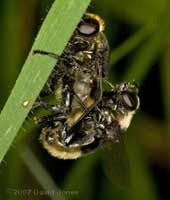
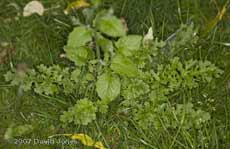
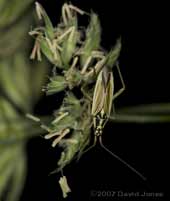
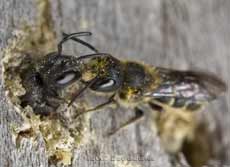
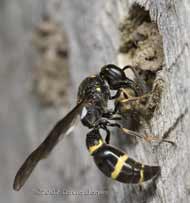
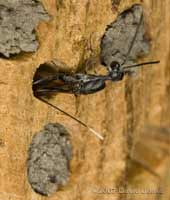
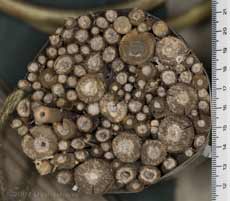
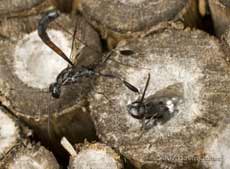
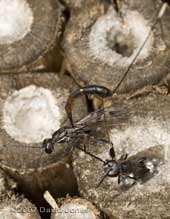
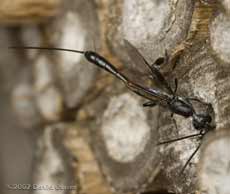
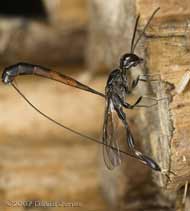
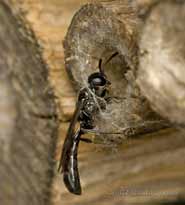
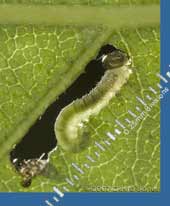
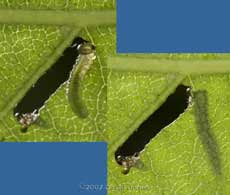
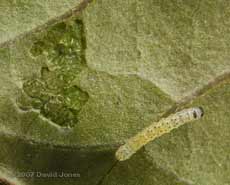
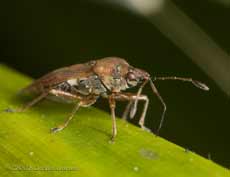
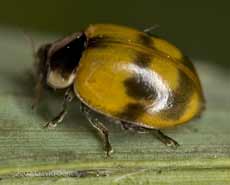
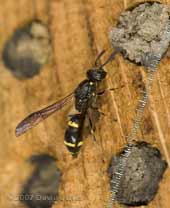
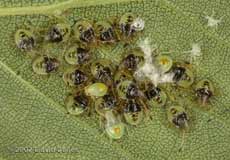
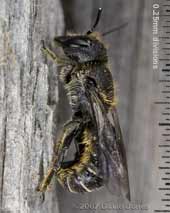
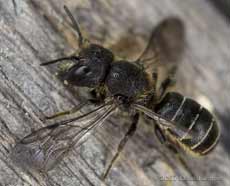
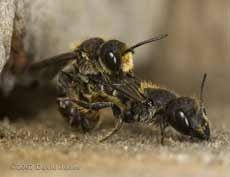
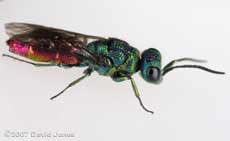
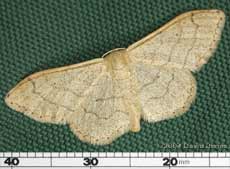
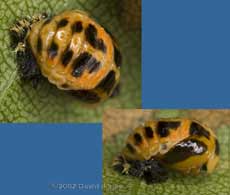
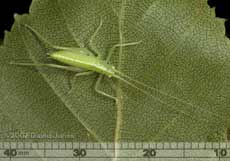
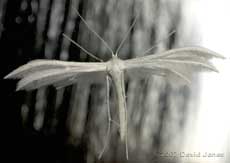
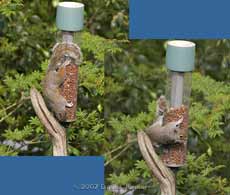
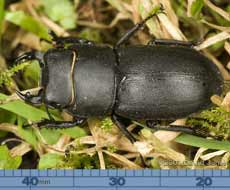 However,
I have to record a couple of things. First was this Lesser Stag Beetle (Dorcus
parallelipipedus) crawling around in grass not far from one of our
seasoned log piles.
However,
I have to record a couple of things. First was this Lesser Stag Beetle (Dorcus
parallelipipedus) crawling around in grass not far from one of our
seasoned log piles. 